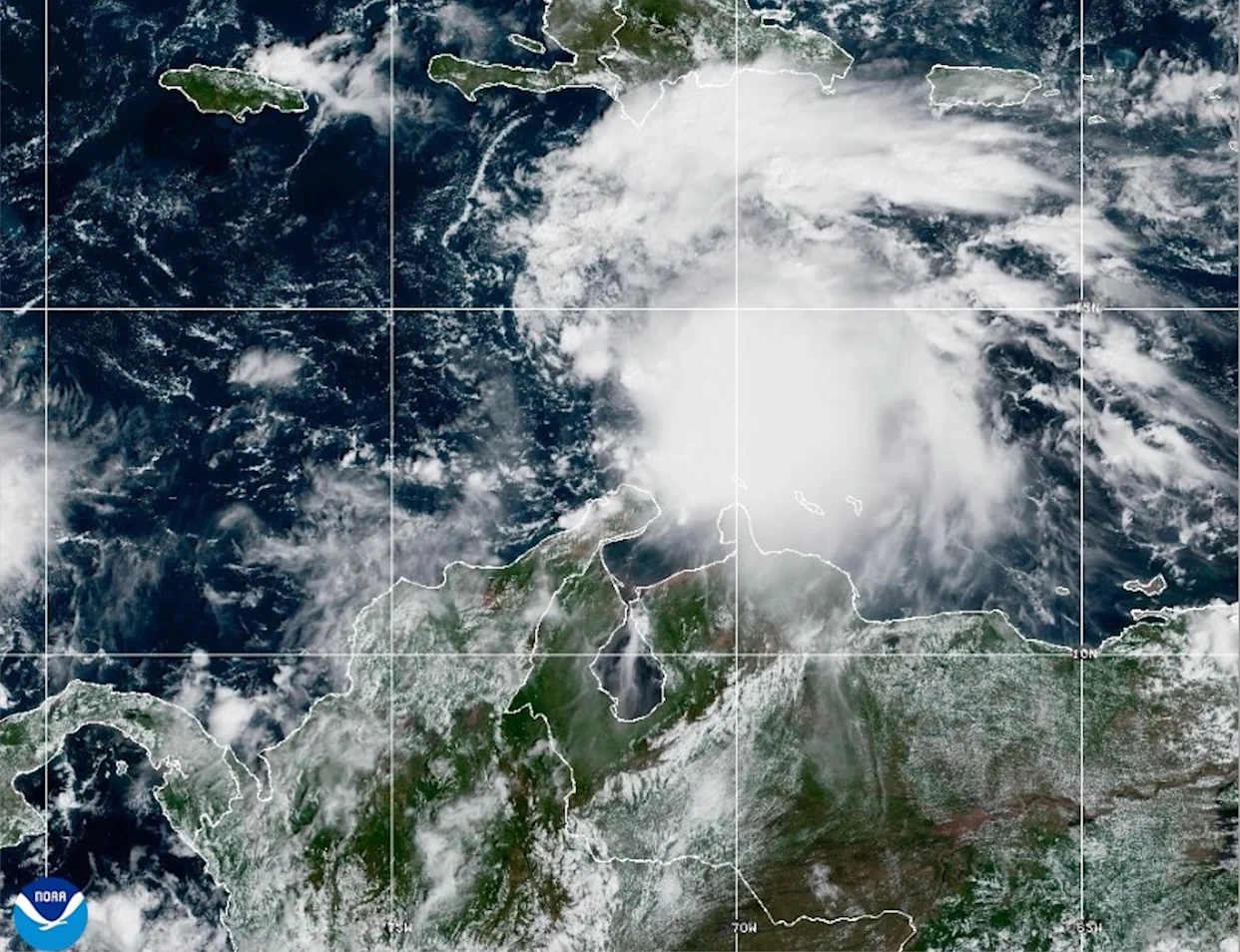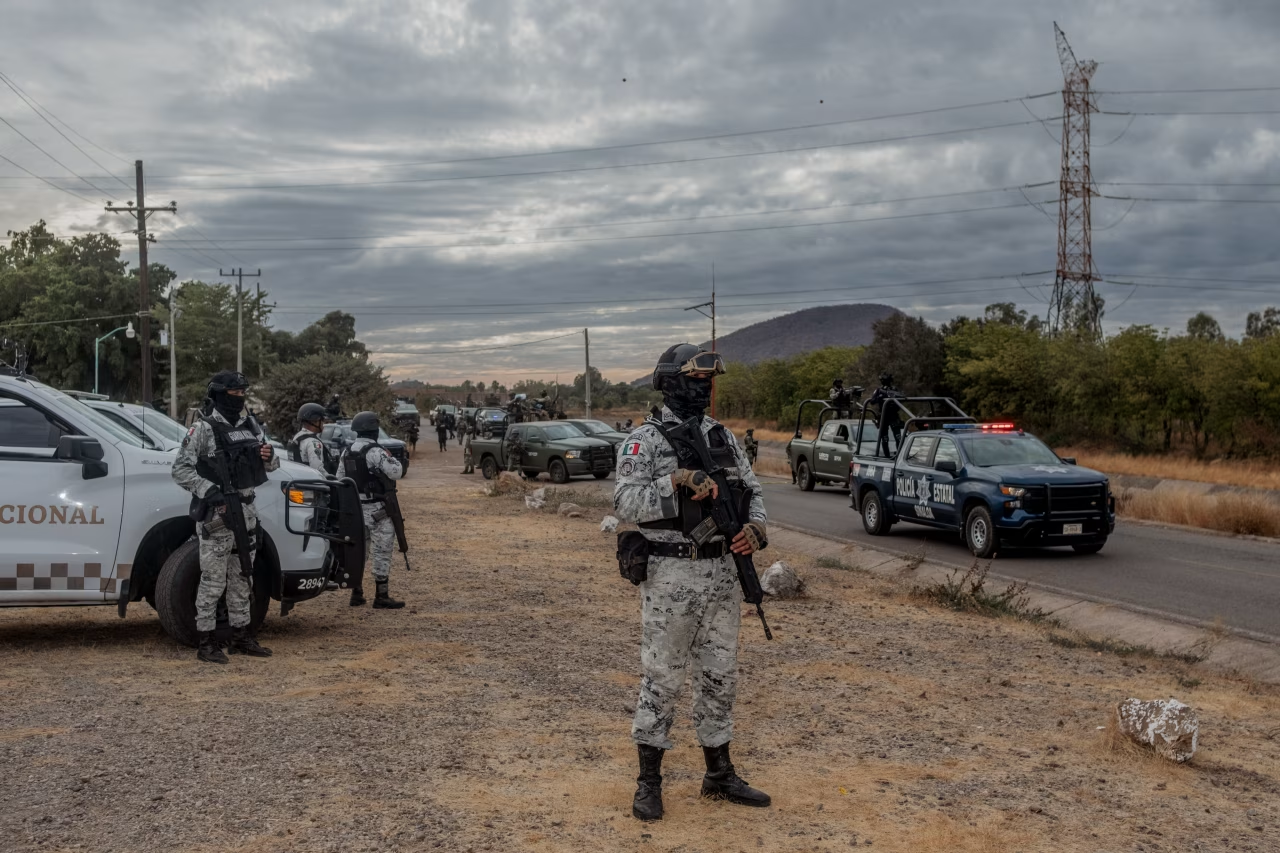A newly formed tropical system, Tropical Storm Melissa, is intensifying in the warm waters of the Caribbean Sea, prompting widespread concern across island nations and Central American coastlines. Meteorologists are closely tracking its slow but steady growth, warning that it could become a powerful hurricane within the coming days.
A Slow-Moving System Gathering Strength
As of the latest reports, Melissa is producing sustained winds near 50 miles per hour while crawling west-northwest at barely 2 miles per hour. The storm’s center is located several hundred miles south of Hispaniola, placing it in a region notorious for spawning late-season hurricanes.
Forecasters say the storm is moving through an environment primed for rapid intensification. Ocean temperatures in the area hover around 87–89°F (30–31°C) — conditions that act like high-octane fuel for tropical systems. Combined with light upper-level winds and high humidity, the atmosphere is offering little resistance to Melissa’s strengthening.
Atmospheric Ingredients for Intensification
Meteorologists point to three major factors that could turn this tropical storm into a major hurricane:
- Warm, deep ocean heat content: The storm is sitting over unusually deep warm waters, meaning that even as strong winds churn the surface, cooler water won’t rise fast enough to weaken it.
- Minimal wind shear: Weak upper-level winds allow the storm’s core to stay vertically aligned, a key condition for rapid intensification.
- Slow movement: Melissa’s sluggish pace means it will continue feeding on the same warm waters for several days — a dangerous setup for a strengthening tropical cyclone.
Forecast Uncertainty and Potential Paths
Computer models show a wide range of possibilities for Melissa’s path, making precise forecasting difficult. Two main tracks are emerging:
- The northern track: If the storm turns northward sooner, it could bring torrential rains, flooding, and strong winds to Jamaica, eastern Cuba, and Haiti. In this scenario, Melissa could intensify rapidly before brushing the Greater Antilles.
- The western drift: Another projection suggests the storm could move slowly west or west-northwest toward Central America, possibly nearing Honduras, Belize, or the Yucatán Peninsula as a more organized and powerful system.
In either case, forecasters warn of dangerous rainfall, mudslides, and flash flooding, especially in mountainous areas of the Caribbean where soils are already saturated from previous storms.
Potential Impacts by Region
- Haiti and the Dominican Republic: Even without a direct landfall, outer rainbands could bring several inches of rain, causing flash floods and landslides in vulnerable regions.
- Jamaica and Cuba: Residents are advised to monitor forecasts closely as the storm’s core could shift northward, bringing hurricane-force winds and coastal storm surge.
- Central America: If the storm drifts westward, nations such as Nicaragua, Honduras, and Belize could face significant impacts later in the week.
Experts Urge Early Preparedness
Authorities across the Caribbean are encouraging residents to take precautions early. Emergency management agencies are urging communities to check disaster kits, secure loose outdoor items, and prepare for potential evacuations. Power outages and infrastructure damage remain a possibility if Melissa strengthens into a hurricane, as many models predict.
Experts also warn that Melissa’s slow speed could lead to prolonged rainfall, raising the threat of flooding and landslides even far from the storm’s center.
Late-Season Activity in a Record-Breaking Year
This year’s Atlantic hurricane season has already surpassed early forecasts, with ocean heat content and atmospheric conditions supporting more frequent and stronger storms. Melissa’s development underscores how climate factors — including record-breaking sea-surface temperatures — continue to drive more intense and longer-lasting tropical activity.
Meteorologists caution that even as the official hurricane season nears its end, the Caribbean remains primed for tropical development well into November.
Looking Ahead
In the coming 48 hours, meteorologists expect Melissa to gradually intensify as it meanders through the Caribbean. If it maintains its structure, the storm could reach hurricane strength by the weekend, potentially posing a serious threat to populated regions.
Residents across the Caribbean basin and the Gulf of Mexico are urged to stay alert, monitor local weather updates, and prepare for the possibility of a stronger system taking shape.
















Leave a Reply